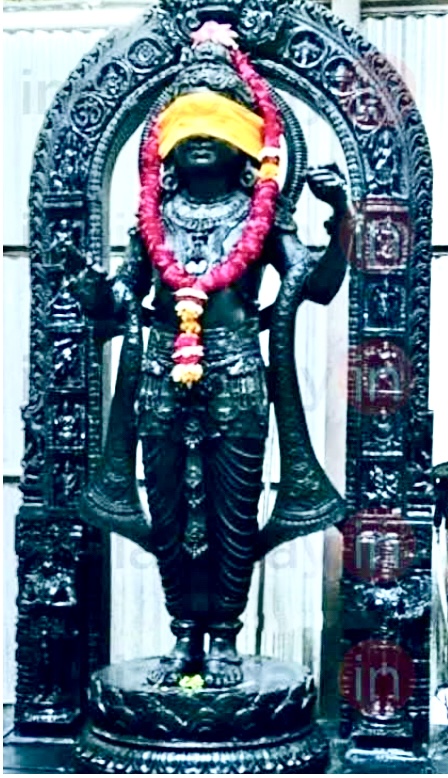In a momentous event on January 17, the 51-inch idol of Lord Ram Lalla crafted by the skilled hands of Mysore sculptor Arun Yogiraj found its sacred place in the sanctum sanctorum of Ayodhya's newly constructed temple. Amidst Vedic chants, the idol's arrival marks the beginning of a series of rites leading up to the Prana Pratishtha ceremony scheduled for January 22.
The first darshan of Ram Lalla, seated in the saddle with a blindfold, evokes deep emotions among the devotees. However, the unveiling has been accompanied by controversy, with leaked images revealing two aspects of the idol – one with a blindfold and the other a close shot of the face without it. Sculptor Arun Yogiraj expressed his discontent over the leakage of the pictures without blindfold. Yogiraj's wife told the media that the incomplete depiction failed to capture the complete Swarup of the lord, suggesting it might have been taken before finalizing the eyes of the murty.
A meticulous examination of the new murty by The BuckStopper team reveals the extraordinary craftsmanship and attention to detail by Arun Yogiraj. The deity is adorned with special signs and symbols believed to enhance its divine power, as explained below.
Symbols and Significance of Ram Lalla idol
1. Lord Surya Narayan: Positioned just above the head of Shri Ram Lala Virajman, the symbol of Lord Surya Narayan, representing the sun as the soul of the world, blesses the idol. Given Shri Ram's lineage as Suryavanshi, this placement holds profound significance.
2. Om and Swastika: On the right side of the idol, the presence of Om and Swastika, derived from Shivpuran Vidyeshwar Samhita, adds spiritual depth. Om, considered the first sound from Lord Shiva's mouth, holds great importance for Siddhi, while the Swastika, associated with Lord Ganesha, acts as the remover of obstacles.
3. Chakra and Mace: On the left side, a chakra and mace, directly linked to Lord Vishnu, signify his role as the hero of the gods in battles between gods and demons. Shri Ram, being an incarnation of Vishnu, is depicted with the Chakra and Gada to vanquish demonic powers.
4. Ten Incarnations of Shri Vishnu: Carved on both sides of the idol, symbols representing the ten incarnations of Shri Vishnu – Matsya, Kurma, Varaha, Narasimha, Vamana, Parashurama, Rama, Krishna, Buddha, and Kalki Avatar – symbolize the diverse manifestations of divine energy.
5. Lord Hanuman and Lotus: Positioned below the Vaman avatar on the right side, Lord Hanuman, representing the Rudra form of Shiva, holds a significant place. The lotus near Shri Ram's feet symbolizes Shri Lakshmi, highlighting the inseparable connection between Shri Vishnu and the divine feminine.
6. Garuda and Kalki Avatar: Below the symbol of Kalki Avatar on the left side, Garuda, the celestial bird and vehicle of Lord Vishnu, reinforces the energy flow from Shri Vishnu to the idol, ensuring divine blessings.

Ram Kumar Kaushik is a seasoned journalist with over 25 years of experience across mediums. The architect of this news website, he is also a consultant with several media groups. He was formerly the group managing editor of ITV Network (NewsX, India News and The Sunday Guardian) and its digital products.



